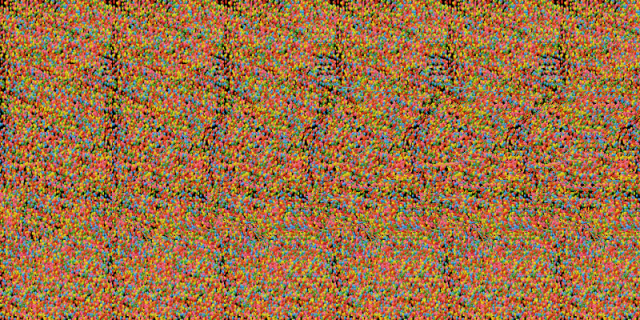Trying to figure out the history of the universe is a lot like putting together a puzzle, only a lot more complicated. First, you have to find all the pieces, since they are scattered about. You then come to the realization that you can't find the edge pieces with the straight sides, so you're stuck starting at the center. Next, you must deal with the fact that only a small fraction of pieces can even be seen with visible light. Finally, once you think you have a handle on things, you learn that all your pieces account for only about four percent of the puzzle—the rest can't be touched or found except by looking around it or through it. It's a bit like an autostereogram ("magic eye") picture.
The leading hypothesis about how galaxies form has them starting at nothing more than a slight perturbation in the matter density of the early universe. It is thought that they then grow by in situ star formation and by merging with other small protogalaxies in a smoothish hierarchical process that ultimately leads to what we see today. A piece published in the current edition of Nature challenges this model.
A group of astronomers and astrophysicists from around the globe examined five of the brightest cluster galaxies (BCGs) and found that the data don't fit this growth process. They propose that these BCGs—which were the most luminous objects around nine billion years ago—grew very rapidly very early on in their lifetimes.


 Loading comments...
Loading comments...
